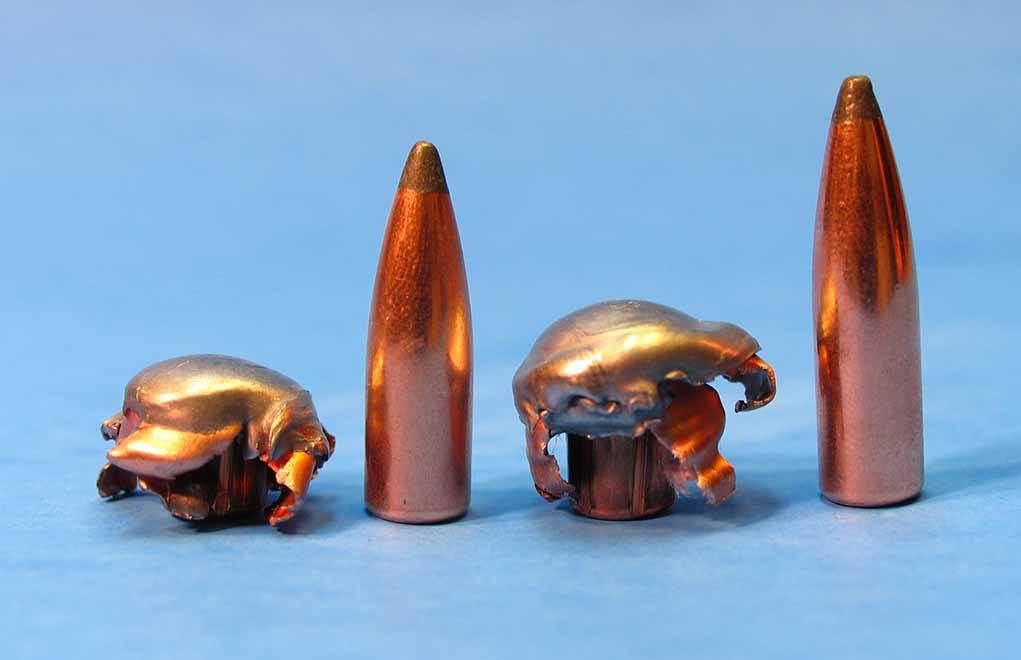At GunDigest, we independently review products. However, we may earn a commission when you purchase through links on our site. Learn More
Bullet Weight: Is Bigger Really Better?

At one time, bullet weight held great significance in terminal performance. But modern materials and designs have changed this dramatically.
When It Comes To Bullet Weight, Do Lightweight Projectiles Out Perform Heavy Options:
- When weigh held more importance when non-expanding lead bullets and before true controlled-expansion bullets.
- With better engineering and materials, light- and mid-weight bullets have similar performance to the heavy ones.
- The lighter bullets also have the advantage of less recoil.
There was a time when bullet weight really mattered. This was back when bullets were made of lead and were essentially non-expanding. The importance of bullet weight continued when the velocities of rifle cartridges began to rise near the 3,000-fps mark. When that happened, many hunters opted for heavier bullets because they thought they worked better.
Truth is, they did work better — not so much because they were heavier, but because they were moving slower. Bullet technology had not advanced to the point where engineering true controlled-expansion bullets were possible. Light bullets at high velocity tended to break apart and reduce penetration. The heavy-for-caliber bullets were still ambling along at moderate velocities, so they held together and penetrated deeper.
After John Nosler introduced the partition bullet design, things began to change. Various companies introduced new and better-designed bullets that could withstand high-impact velocities. With the modern bullets we have today, bullet weight is simply not that important. In fact, given similarly designed bullets, they will all deform to about the same frontal diameter and penetrate to the same depth, regardless of weight.
Load Up On Reloading Info:
- The Flexible And Forgiving .30-06 Springfield
- The .45 Colt: A Wheelgun Classic
- .300 Win. Mag.: The Answer To Most Hunting Questions
- Tips For Reloading the .223 Remington
For example, consider .308-caliber Sierra Pro Hunter bullets fired from a .308 Winchester. The 150-grain version with a muzzle velocity of 2,590 fps will penetrate between 12 and 13 inches, and it will deform with a frontal diameter of about 0.64-inch. The same 180-grain bullet with a muzzle velocity of 2,450 fps will perform almost identically. You’ll see a larger difference in recoil energy than anywhere else; the 180-grain load will generate about 8 percent more recoil than the 150-grain bullet.
When it comes to selecting optimum bullet weight for just about any cartridge and any application, you’ll get the best balance of what that cartridge has to offer if you choose a bullet weight that is middle of the road. For example, with common .308 Winchester factory ammunition, you’ll see bullet weights from 110 to 180 grains. That puts 150 grains right about in the middle. For most general-purpose applications, something close to 150 grains will be the best option.
The same applies to defensive handgun cartridges: With the 9mm Luger, most loads have bullet weights between 115 and 147 grains. That means the popular 124-grain loads will generally give you the best balance of performance.
At one time, heavier bullets were a good idea. Today, with the modern bullet technology we have — in all but very specialized situations — the mid-weight bullets are best, and even the lightest bullets can do wonders.
Editor's Note: This article originally appeared in the March 2019 issue of Gun Digest the Magazine.
Next Step: Get your FREE Printable Target Pack
Enhance your shooting precision with our 62 MOA Targets, perfect for rifles and handguns. Crafted in collaboration with Storm Tactical for accuracy and versatility.
Subscribe to the Gun Digest email newsletter and get your downloadable target pack sent straight to your inbox. Stay updated with the latest firearms info in the industry.